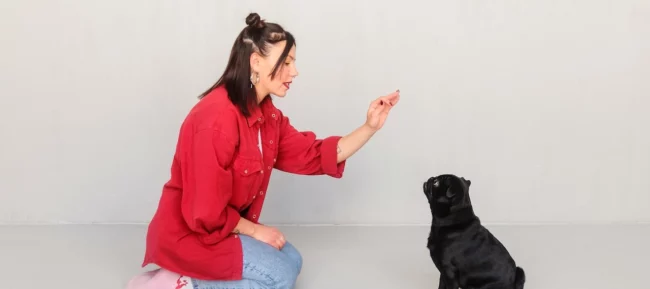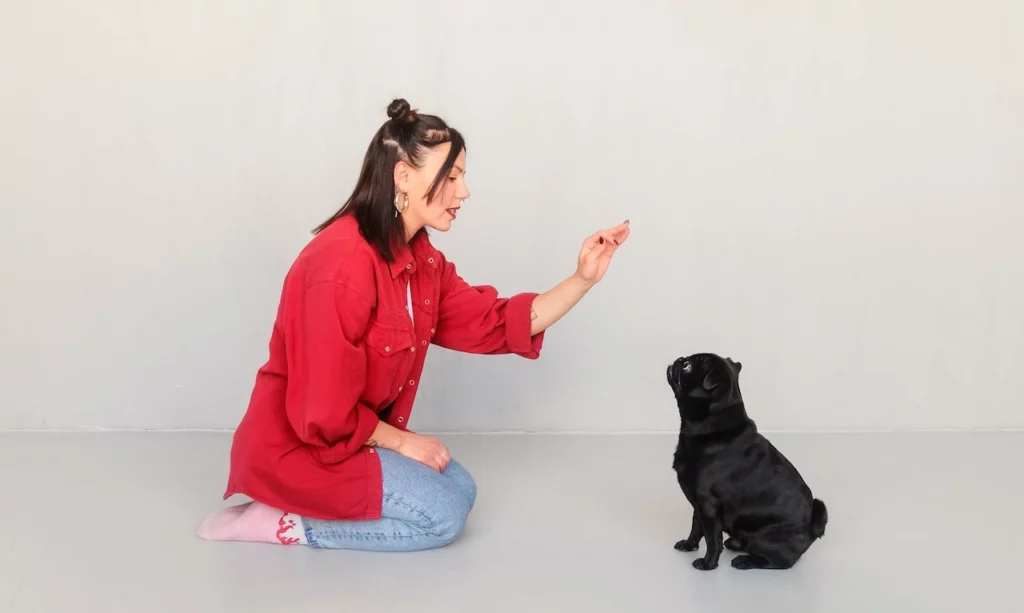


A new puppy can fill your life with unending love and delight. Basic commands must be taught to your furry pet if you want a peaceful connection. In the following guide, we’ll explore the top 10 commands that every puppy should learn, setting the foundation for a well-behaved and happy companion.
Teaching commands to puppies serves multiple purposes. Apart from improving your relationship with your dog, it guarantees their safety in many circumstances. The relationship you share with your furry pet is also strengthened as trust is developed. If you have children, you send them to school for education. Similarly, puppies should also learn how to conduct themselves among other dogs as well as humans. People will know them by their nature.
The first and most crucial command is your puppy’s name. Start by using their name consistently during interactions. Appreciate them when they respond to it. This command establishes their identity. They can also gain their attention.
Example: Do you remember how you used to address your newborn child? Later on, they identify themselves with the name you give them. The same logic applies to dogs. You also started responding whenever someone addressed you by the name your parents had given you.
The “come” command is vital for safety. Begin indoors with minimal distractions. Say “come” and encourage your puppy to approach you. You have to generously reward them with treats and praise. Gradually practice in more challenging environments. It requires a few steps. They are as follows-
Step 1: Get down to their level: Squat or kneel at your puppy’s eye level.
Step 2: Use their name: Say their name followed by “Come” in an enthusiastic tone.
Step 3: Back up: Take a few steps backward to encourage them to follow.
Step 4: Reward: When your puppy comes to you, reward them with a treat and lots of praise.
Example: If you want your puppy to come to you, you’d get down to their level, say their name followed by “Come,” back up a few steps, and when they come to you, reward them and praise them.

“Sitting” is a fundamental command that helps control your puppy in various situations. Hold a treat above their head, and as they look up, gently push their backside down. Reward them when they sit. Repeat this process consistently. It also requires a few steps. They are as follows-
Step 1: Get your puppy’s attention: Hold a treat close to your puppy’s nose so they can smell it.
Step 2: Raise the treat: Slowly lift the treat above your puppy’s head, causing its nose to follow and its bottom to naturally lower.
Step 3: Say the command: As your puppy’s bottom touches the ground, say “Sit” in a clear, firm, but gentle voice.
Step 4: Reward: Once your puppy is sitting, give them the treat immediately and offer praise.
Example: Let’s say you’re teaching your puppy to sit. You’d hold a treat close to their nose, slowly raise it above their head, say “Sit,” and when their bottom touches the ground, reward them with the treat and praise.
The “stay” command ensures your puppy remains in one place until permitted to move. Start with short intervals and gradually increase the duration. Use verbal cues like “stay” and hand signals. Reward and praise for compliance. It also requires a few steps. They are as follows-
Step 1: Start with a sit: Ask your puppy to sit.
Step 2: Use the hand signal: Hold your open palm in front of your puppy’s face and say “Stay.”
Step 3: Take a step back: Step back one pace while maintaining eye contact.
Step 4: Reward and return: If your puppy stays in place, return to them, reward them, and offer praise.
Example: After your puppy has learned to sit, you’d ask them to sit, give the “Stay” command with a hand signal, take a step back, and if they remain seated, you’d return, reward them, and praise them.
Once you’re done with the above-mentioned commands, you need not bother much about the steps for the following commands:
“Leave it” prevents your puppy from picking up harmful objects. Show them a treat, close your hand around it, and say “Leave it.” When they refrain from trying to take it, reward them with a different treat.
The “down” command helps calm your puppy and prevents jumping. Use a treat to guide their head down to the floor while saying “down.” Reward them when they comply. Practice using this command in various circumstances.
“Wait” teaches patience and self-control. Start by using it before mealtime. Place your puppy’s food bowl on the ground but ask them to “wait” before allowing them to eat. Gradually extend the waiting period.
Getting your puppy to focus on you is essential for effective training. It has been observed that treats and toys are amazing tools to gain their attention. Once they make eye contact, reward them. That is how the bond between you and your pup will strengthen.
“Heel” is crucial for enjoyable walks. Begin with short, controlled walks, and use treats to keep your puppy beside you. Reward them for walking without pulling. Gradually increase the duration and add distractions.
The “off” command teaches your puppy to stop unwanted behaviors, like jumping on people or furniture. Say “off” and gently guide them away from the object or person. You should appreciate them when they comply.
It is our dedication to responsible breeding methods at Legacy Ranch that makes us proud. We are experts in puppy training too. Our pleasure lies in preparing our puppies for success in their future homes, we give them a strong foundation in basic instructions.
Conclusion:
Training your dog on these fundamental commands improves their compliance. You can develop your relationship with them. Always keep in mind that excellent training requires patience and perseverance. Your puppy will grow up to be a well-behaved, cherished member of your family with love, positive reinforcement, and commitment.
The time it takes to train a puppy on these commands can vary, but with consistent practice, most puppies can learn them within a few weeks to a few months.
While treats are effective rewards, praise and affection are equally important. A combination of treats, praise, and toys can motivate your puppy.
If your puppy doesn’t respond, remain patient and try again later. Ensure you’re in a low-distraction environment and use high-value rewards to motivate them. or contact any Puppy Care and Training service provider near you.
You can start training your puppy on these commands as early as 8 to 10 weeks of age. Begin with short, positive training sessions to keep their attention and enthusiasm high.
Leave a Reply